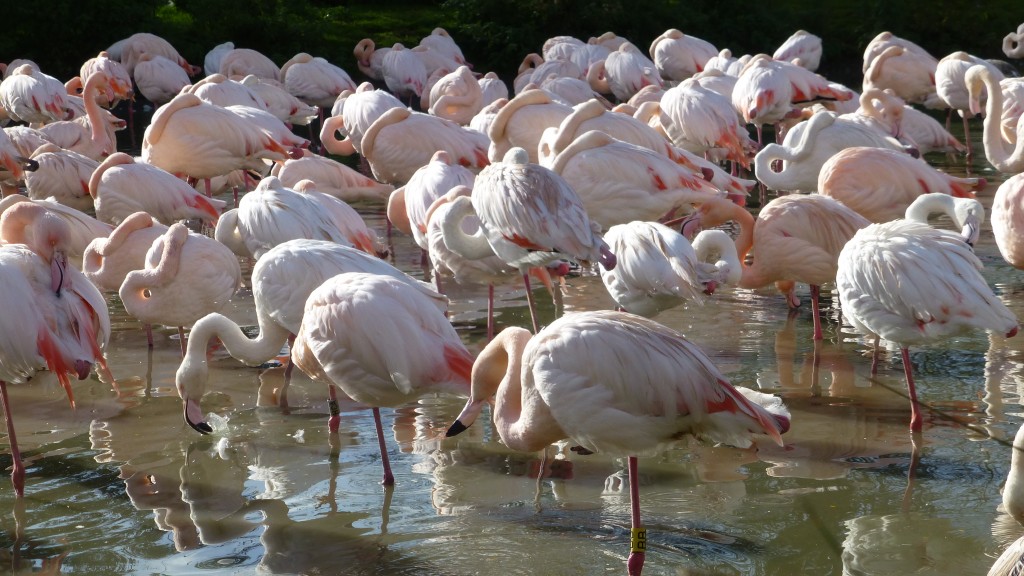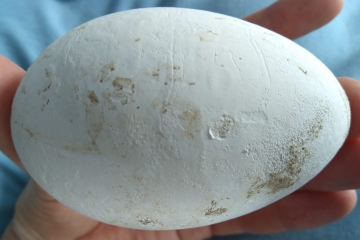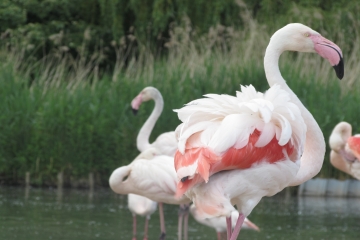A good year for Flamingo Lagoon
As 2014 draws to a close, it's a good time to reflect on the comings and goings in the WWT Slimbridge flamingo flocks. And particularly in the greater flamingo flock that, finally, after much nail-biting in 2012 and 2013 got settled into their new home and produced some chicks. The mammoth number of eggs laid is a good sign for breeding in future years (not that we want to tempt fate of course). After tweaks to the nesting site, and to the substrate that is used on the island, as well as removing an older island, altering the water depth and changing the way the birds are fed, the avics were rewarded with a bunch of healthy chicks that are now growing into handsome adult birds. The hard work and pandering to the whim of the flamingos paid off!
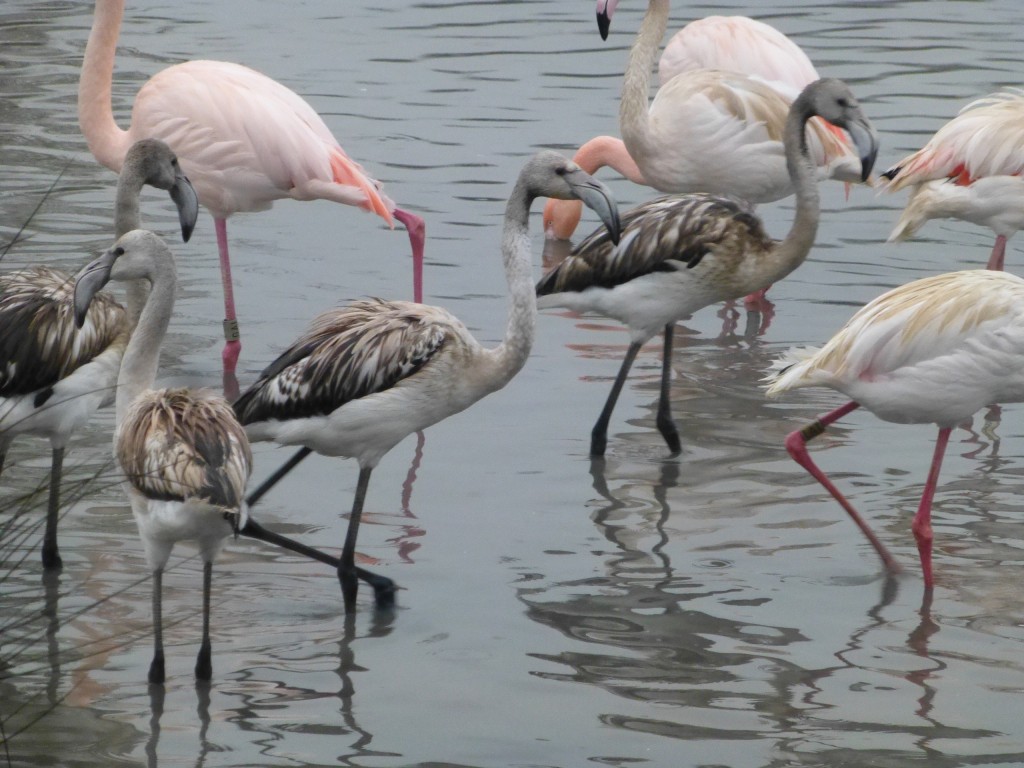
In my last post I talked about one of this summer's MSc students; in this post I'll introduce you to the other student. Alyssa, all the way from the USA, to study animal behaviour here in Britain, spent five months patiently and thoroughly observing the social behaviour of the flamingos in Flamingo Lagoon. Following on from a previous MSc student in 2013, Alyssa aimed to document whether or not "friendships" from the previous year continued into 2014 as well as looking at the enclosure use and general activity of the birds.
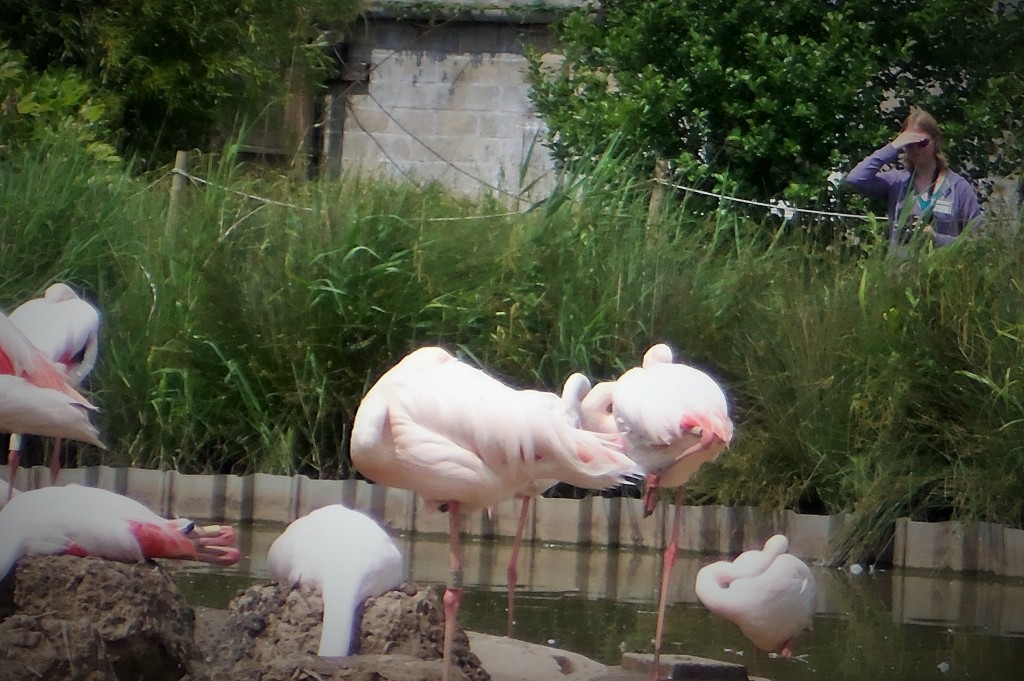
Alyssa's data make for interesting reading. The flock of greater flamingos mixes in a manner that is not random, and older birds that make up the original population (those that, back in the day, came from the wild) are important to who does what and who goes where. The knowledge and information held by these older birds is passed through connections between individuals so that, in time, younger birds will learn to take their place in the flock's structure. Obviously, continuation of this research and more data collection is needed to see if this is consistently the case.
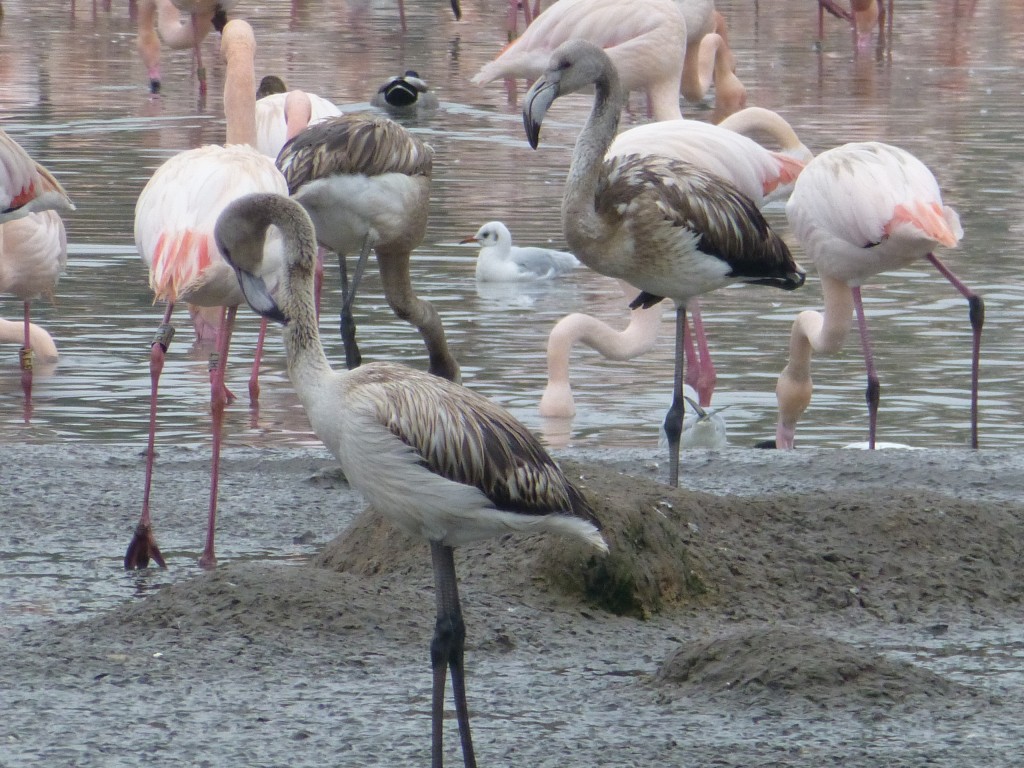
Alyssa also looked instances of aggression and dominance between individual birds in the flock, and she found that (as to be expected) the onset of breeding increased the aggressive behaviour with the flock overall. The birds like to cram close together on the nesting island but the closer each bird gets to its neighbour, the more squabbling that can occur. That's why it is important for Sparky and Phil and co. to keep checking on the flamingos in the breeding season and to know how to manipulate eggs and breeding pairs to keep everyone in the colony happy.
Thanks to Alyssa's project we know that the large expenses of water are important for the birds to get away from each other, to calm down and relax. Especially around breeding time when the flamingos are deliberately packing themselves together. It sounds odd but it has a survival value too (for their chicks), its just that flamingos have limited tolerance for their immediate neighbours. So by allowing them the space to move away from enforced company and hang out with their friends, keeps each bird more relaxed. And Alyssa's research shows this, with very little aggression occurring when the flamingos are mooching about in their pool. With 2015 just around the corner, stay tuned for yet another year of the flamingo soap opera and hopefully some more interesting revelations on the bird's lives at Slimbridge.
